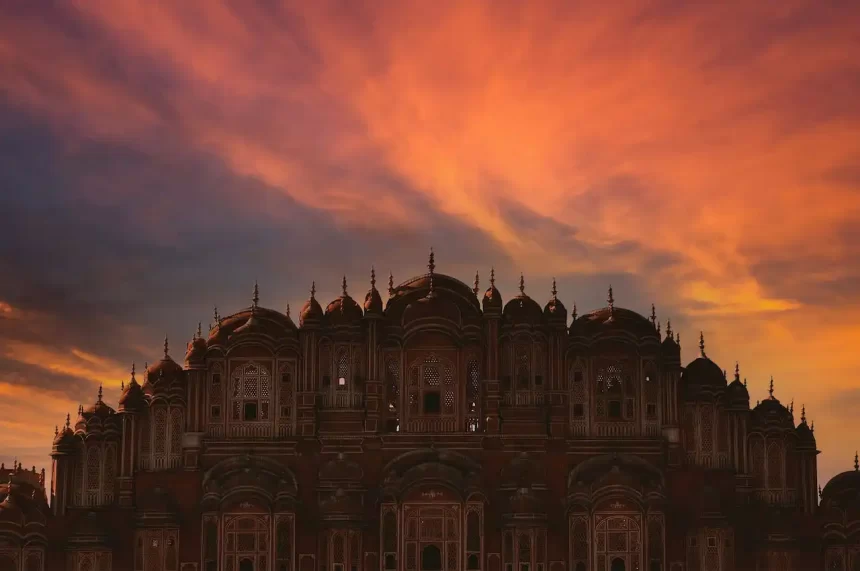Overview of Jaipur’s Top Attractions for Tourists and Travelers
Jaipur, the capital city of Rajasthan in India, renowned as the Pink City, is a mesmerizing blend of history, culture, and majestic architecture. Established by Maharaja Sawai Jai Singh II in the 18th century, this city is a part of the famous Golden Triangle tourist circuit, which also includes Delhi and Agra. Known for its vivid, bustling streets, rich cultural heritage, and impressive historical sites, Jaipur is a city where the ancient and the modern coexist in a harmonious symphony. The city’s iconic structures, reflective of the Rajput and Mughal architectural styles, make it a haven for history buffs and architecture enthusiasts. From the grandeur of its forts and palaces to the vibrant hues of its bazaars, Jaipur encapsulates the very essence of Rajasthan’s royal past. The city’s traditional cuisine, lively festivals, and hospitable locals add to its charm, making it a must-visit destination for travelers from around the world.
 | All Inclusive : Jaipur – Agra- Jaipur Same Day Taj Mahal Tour By Car – $152.54 Destination to Visit :- Agra. |
Amer Fort
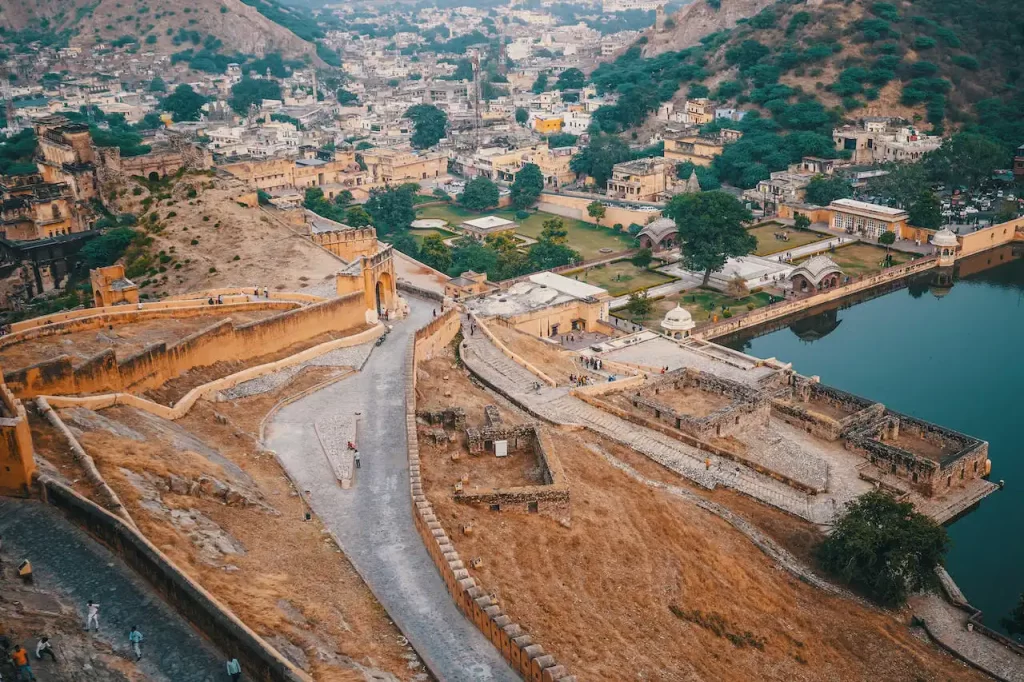
Jaipur Tour Packages
 | All Inclusive : Jaipur – Agra- Jaipur Same Day Taj Mahal Tour By Car – $152.54 Destination to Visit :- Agra. |
Amer Fort, a majestic structure located on a hilltop near Jaipur, is a magnificent example of Rajputana architecture. Built by Maharaja Man Singh I in the 16th century, it is a sprawling complex of courtyards, palaces, and temples. Its red sandstone and marble structures are adorned with intricate carvings, mirror work, and paintings, showcasing the craftsmanship of the era. Visitors are often captivated by the Sheesh Mahal (Mirror Palace), with its walls and ceilings covered in mirror mosaics, creating a stunning illusion of stars. The fort’s Diwan-e-Aam (Hall of Public Audience) and Diwan-e-Khas (Hall of Private Audience) reflect the blend of Hindu and Mughal architecture. An elephant ride up to the fort is a popular tourist activity, offering a royal experience. The evening light and sound show brings the fort’s history to life, making it a not-to-be-missed experience. Overlooking the Maota Lake, the fort’s strategic position and architectural grandeur make it a symbol of Jaipur’s glorious past.
City Palace
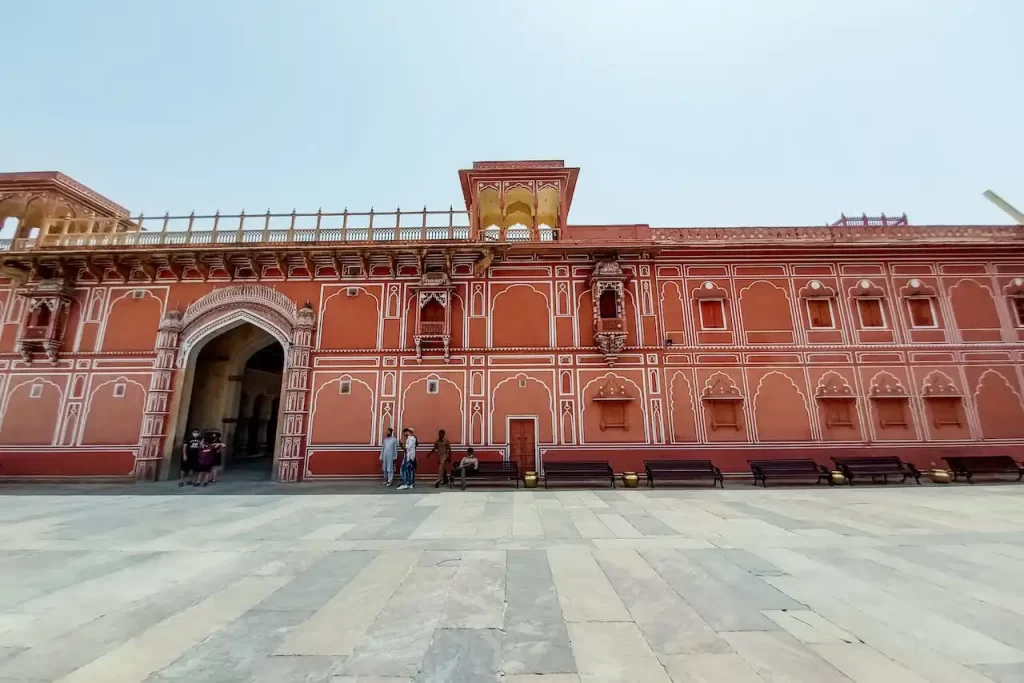
City Palace, located in the heart of Jaipur, is a striking blend of Rajasthani and Mughal architecture. This palace complex, built by Maharaja Sawai Jai Singh II, continues to house the royal family, although parts of it are open to the public. The complex includes several buildings, courtyards, galleries, and a museum. The palace’s architecture is characterized by its elaborate gateways, intricate murals, and detailed decorative work. The Mubarak Mahal and Chandra Mahal are among the most notable structures within the complex. The palace museum showcases a rich collection of royal costumes, arms, carpets, and manuscripts, offering a glimpse into the opulent lifestyle of the Rajput royals. The intricate Peacock Gate, with its vivid colors and detailed work, is a photographic highlight for visitors. The City Palace is not just a testament to Jaipur’s royal heritage but also a living example of the city’s regal past, seamlessly blending into the present.
Hawa Mahal
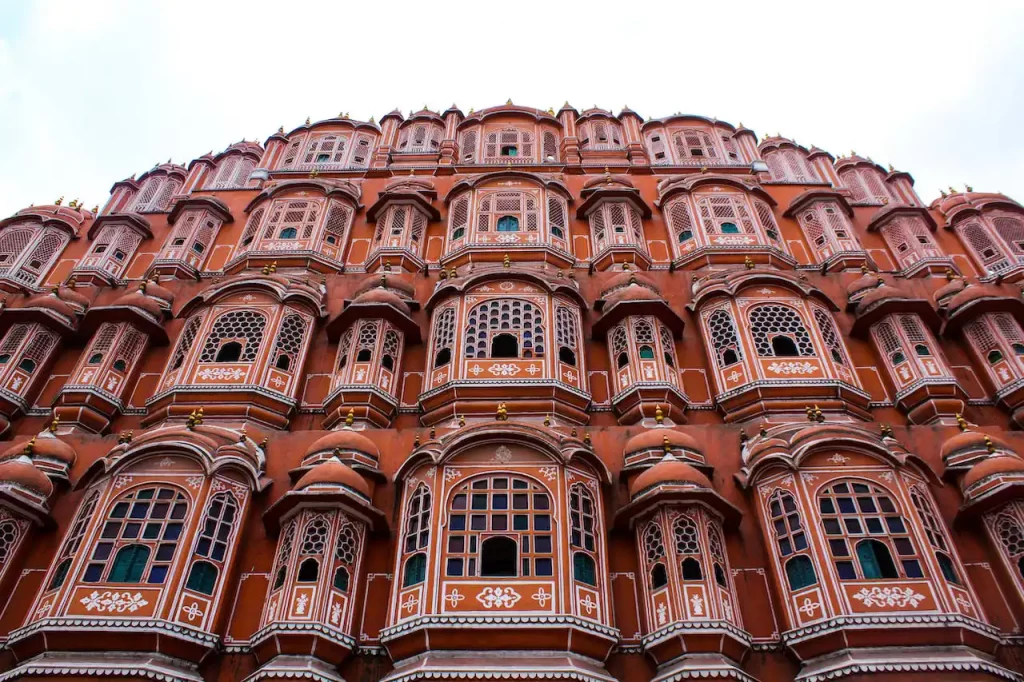
Hawa Mahal, the iconic ‘Palace of Winds,’ is an architectural wonder of Jaipur. Built in 1799 by Maharaja Sawai Pratap Singh, it is a five-story pyramidal shaped monument with 953 small windows, known as Jharokhas, decorated with intricate latticework. The primary purpose of the palace was to allow royal ladies to observe everyday life and festivals on the streets below without being seen. Made of red and pink sandstone, the palace’s façade resembles a honeycomb, and the lattice design allowed for cool air to pass through, making the interior comfortable even in hot weather. This unique structure is an exemplary fusion of Rajput and Islamic architecture. Visitors can climb to the top for a breathtaking view of the city and the City Palace. Hawa Mahal’s distinct façade makes it one of the most photographed buildings in Jaipur, symbolizing the city’s artistic and cultural heritage.
Jantar Mantar Observatory
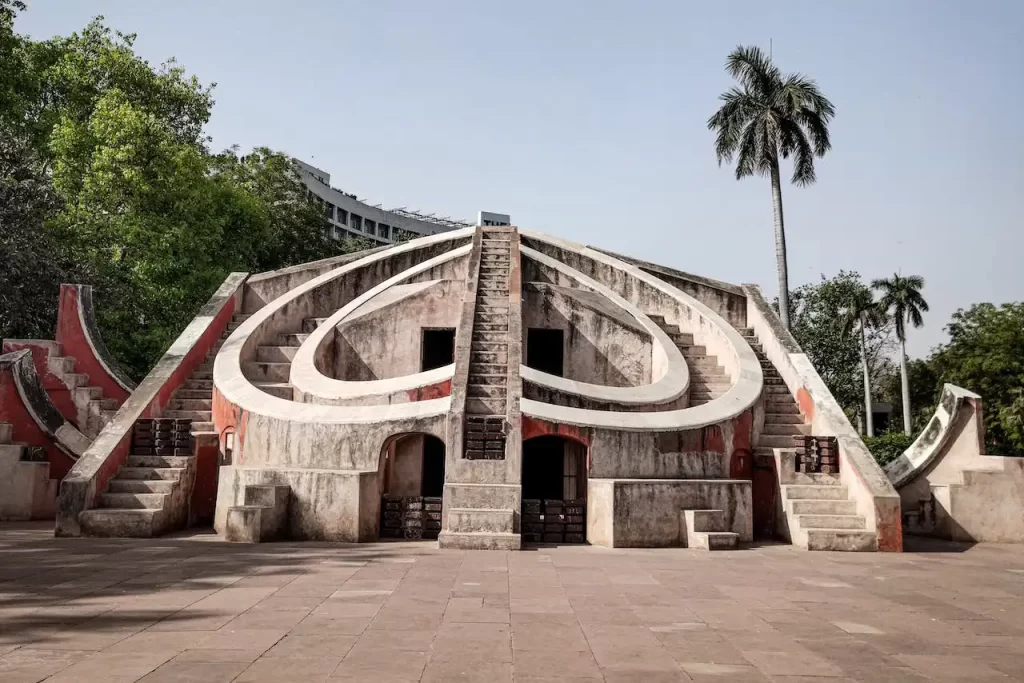
Jantar Mantar in Jaipur, built by Maharaja Sawai Jai Singh II, is an astronomical observatory that reflects the scientific acumen of its time. Completed in 1734, it features the world’s largest stone sundial, and is a collection of nineteen architectural astronomical instruments. These instruments, built from stone and marble, were used for observing the heavens and making astronomical calculations. The precision of these instruments in measuring time, predicting eclipses, and tracking stars and planets is astounding. The Samrat Yantra, the largest instrument in the observatory, is an impressive sundial that can measure time to an accuracy of two seconds. Jantar Mantar is not just an astronomical site but also an architectural marvel, combining science, art, and religion. Its recognition as a UNESCO World Heritage Site underscores its historical and scientific significance. A visit to Jantar Mantar is a journey into the astronomical brilliance of the past, offering a unique perspective on how ancient civilizations understood the cosmos.
Jaipur Bazaars

Jaipur’s bustling bazaars are a riot of colors, sounds, and smells, offering an authentic shopping experience. These markets are famous for traditional Rajasthani products including textiles, jewelry, footwear, and handicrafts. Johari Bazaar, a paradise for jewelry enthusiasts, is known for its precious gemstones and exquisite handmade jewelry. Bapu Bazaar offers a variety of leather goods, especially the traditional Rajasthani Mojari shoes. Tripolia Bazaar is the place to go for brassware and ironware. The vibrant atmosphere of these markets is complemented by the warm hospitality of the shopkeepers and the variety of goods on offer. Walking through these bazaars, one can witness the rich craftsmanship of Jaipur and its traditional art forms. Besides shopping, these markets offer a chance to try local street food and interact with the locals, providing a deeper understanding of Jaipur’s culture and lifestyle.
Nahargarh Fort
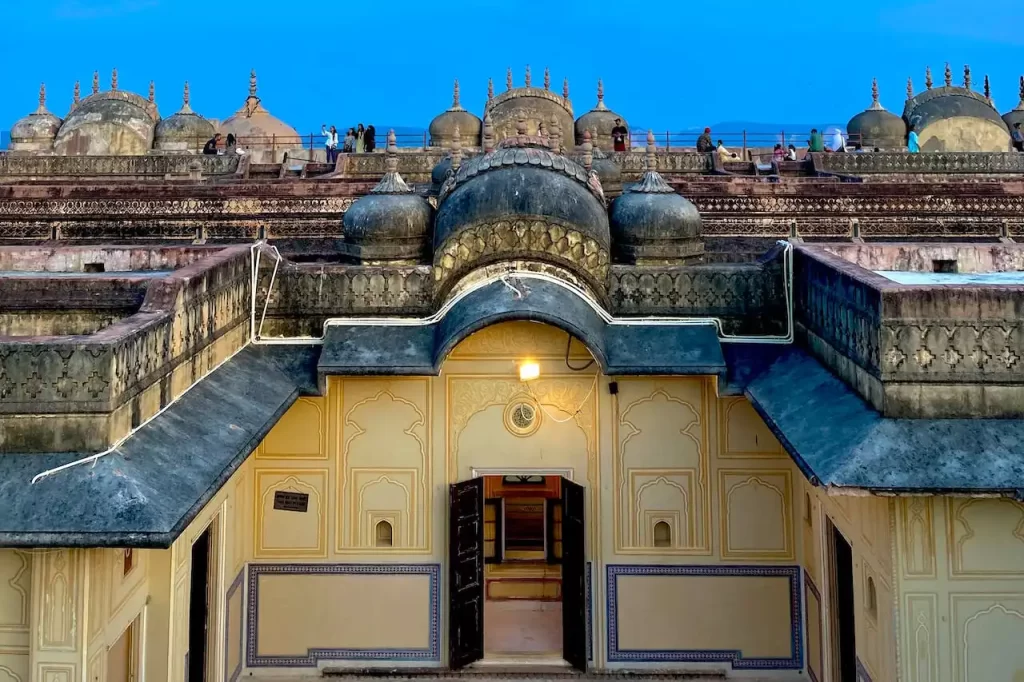
Nahargarh Fort, perched on the edge of the Aravalli Hills, offers stunning views of Jaipur city. Built in 1734 by Maharaja Sawai Jai Singh II, the fort was originally named Sudarshangarh and later renamed Nahargarh, which means ‘abode of tigers.’ The fort, once a retreat for the royal family, is known for its extended wall that connects it to the nearby Jaigarh Fort. The interiors of the fort are a blend of Indian and European architectural styles, with some beautifully decorated rooms. Madhavendra Bhawan, the fort’s summer palace, is adorned with exquisite murals and frescoes. Nahargarh Fort is not only a historical monument but also a favorite spot among locals and tourists for its breathtaking sunset views. The fort’s recent addition of a wax museum and a glass palace further enhances its appeal. A visit to Nahargarh Fort is a journey through history, offering panoramic views of the city and a glimpse into the royal leisure activities of the past.
Jaigarh Fort
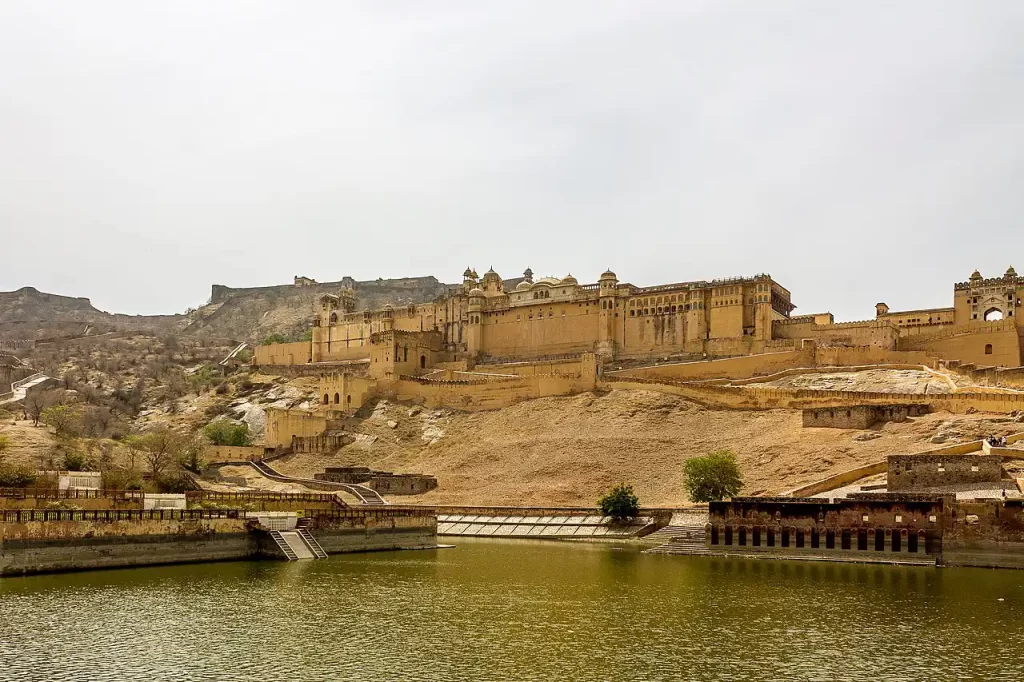
Jaigarh Fort, located on the Cheel ka Teela (Hill of Eagles) of the Aravalli range, overlooks the Amer Fort and the Maota Lake. Built in 1726 by Jai Singh II, the fort is a symbol of the strength and prowess of the Rajput rulers. The fort’s most famous attraction is the Jaivana Cannon, the world’s largest cannon on wheels. This impressive piece of military hardware reflects the fort’s strategic importance in the defense of Amer. Jaigarh Fort is an architectural marvel, with its thick walls, watchtowers, and robust structure. The fort houses a museum displaying a collection of weapons and armors used by the Rajputs, along with photographs of the royal family. The fort offers a panoramic view of the surrounding landscape and is a testament to the military architecture of medieval India. A visit to Jaigarh Fort is not just a step back into history but also an opportunity to admire the architectural and military ingenuity of the Rajput era.
Albert Hall Museum
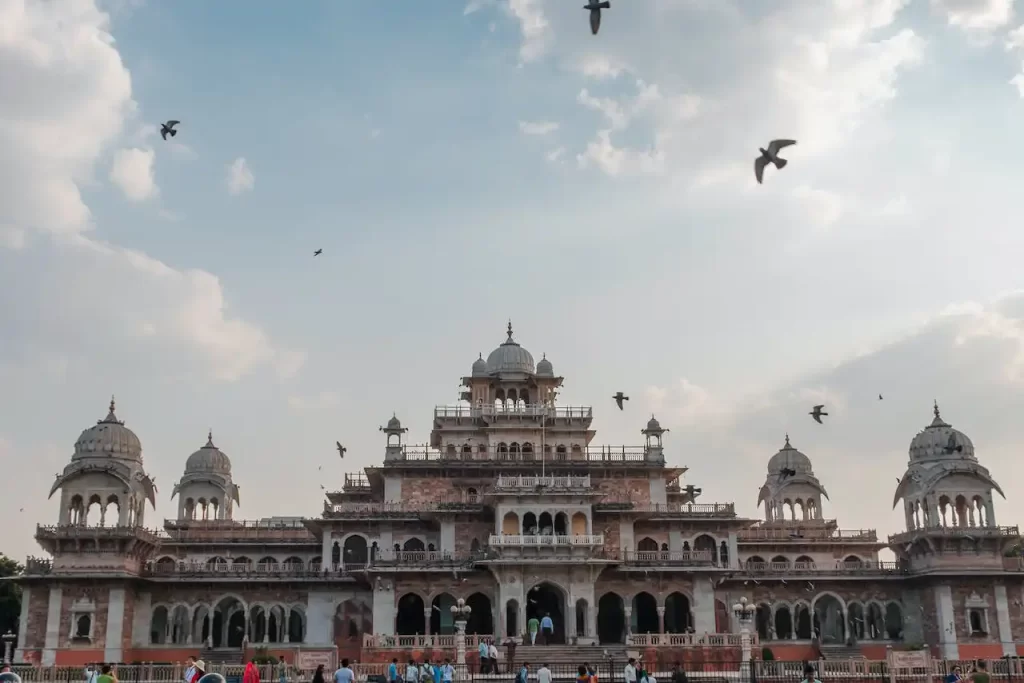
Albert Hall Museum, situated in the Ram Niwas Garden, is the oldest museum in Rajasthan. Built in 1876 as a concert hall, it was later converted into a museum. The museum, designed in Indo-Saracenic architecture, is a fine example of the blend of Indian and British architectural styles. The museum’s collection includes an array of artifacts from different parts of India and the world, including sculptures, paintings, jewelry, carpets, and an Egyptian mummy. The museum’s galleries are dedicated to different civilizations and art forms, showcasing the richness of cultural heritage. The museum also has a rich collection of Rajasthani miniatures, traditional costumes, and woodwork. The building itself, with its domes, arches, and courtyards, is a work of art. A visit to Albert Hall Museum offers a journey through the history of art and culture, making it a must-visit for art enthusiasts and history buffs.
Birla Mandir
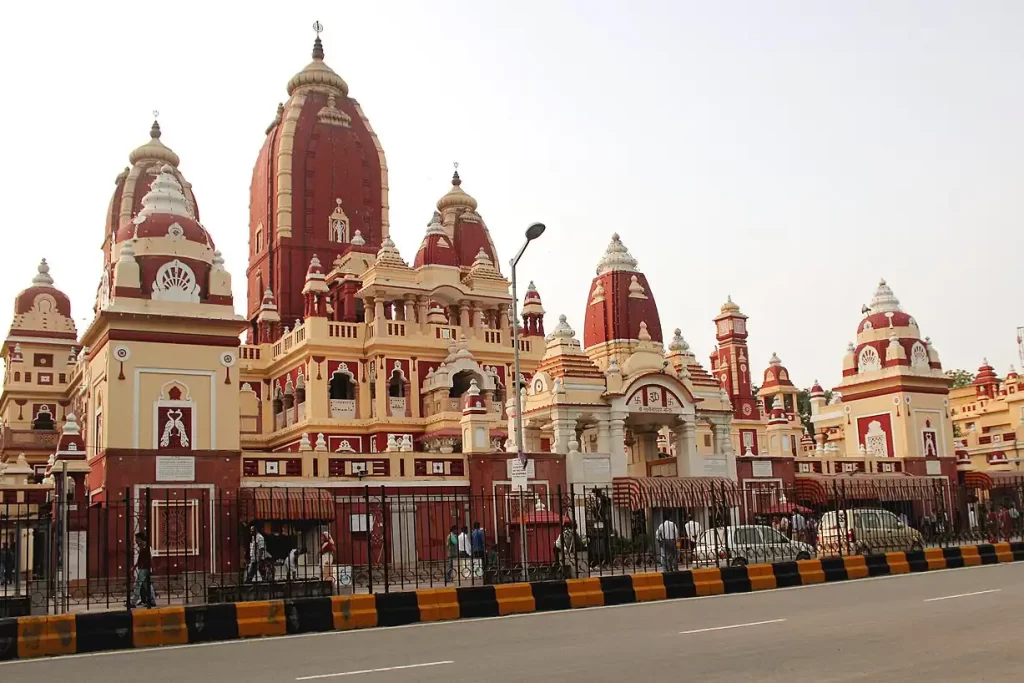
Birla Mandir, also known as the Laxmi Narayan Temple, is a Hindu temple made of pure white marble. Located at the base of Moti Dungri hill, the temple is dedicated to Lord Vishnu and Goddess Laxmi. Built in 1988 by the Birla family, one of India’s prominent industrialists, the temple is a modern architectural marvel, blending ancient Hindu architectural styles with modern design. The temple’s walls are adorned with carvings of deities, scenes from Hindu mythology, and quotes from the Gita and Upanishads. The serene ambiance of the temple provides a spiritual retreat in the midst of the city’s hustle and bustle. At night, the temple is beautifully lit, creating a peaceful and divine atmosphere. The temple’s garden is an oasis of calm, offering a picturesque setting for meditation and contemplation. Birla Mandir is not just a place of worship but also a symbol of the harmonious coexistence of different religious beliefs. It attracts devotees and tourists alike, regardless of their religious background, making it a testament to the inclusive nature of Indian spirituality. The temple’s architecture and the tranquil environment make it a place of peace and reflection, providing visitors with a sense of spiritual rejuvenation. Whether one is seeking spiritual solace or interested in architectural beauty, Birla Mandir offers a unique and enriching experience.
Elephantastic
Elephantastic, a sanctuary located near Jaipur, is a haven for elephant lovers. This sanctuary offers a unique and ethical experience to interact with elephants in their natural habitat. Established with the goal of promoting the welfare of these majestic creatures, Elephantastic provides a humane environment for rescued and retired elephants. Visitors have the opportunity to learn about the lives of elephants, their behavior, and the challenges they face. The activities include feeding, bathing, and walking with the elephants, allowing for an up-close and personal experience. The sanctuary also educates visitors about the importance of conservation and the ethical treatment of animals. The bond between the elephants and their caretakers is heartwarming and offers an insight into the compassionate side of wildlife care. Elephantastic is not just an attraction but a responsible tourism initiative that contributes to the welfare of elephants and offers a memorable experience for visitors. It’s an opportunity to connect with nature and contribute to the cause of wildlife conservation.
Frequently Asked Questions (FAQs)
- What is the best time to visit Jaipur?
- The ideal time to visit Jaipur is from October to March when the weather is pleasant, making it suitable for sightseeing and outdoor activities.
- Is Jaipur safe for tourists?
- Jaipur is generally safe for tourists. However, like any other tourist destination, it’s advisable to take standard safety precautions and be aware of your surroundings.
- How can I reach Amer Fort from Jaipur city center?
- Amer Fort can be reached by local bus, taxi, or auto-rickshaw from Jaipur city center. It’s approximately 11 kilometers away, and the journey takes around 30 minutes.
- Are there any entry fees for the attractions in Jaipur?
- Most attractions in Jaipur, including forts, palaces, and museums, have entry fees. These fees vary for Indian and foreign nationals, and there are often additional charges for photography.
- Can I explore Jaipur’s attractions on foot?
- While some attractions in the city center like the City Palace and Hawa Mahal are within walking distance, others like Amer Fort and Nahargarh Fort are farther away and require transportation.
